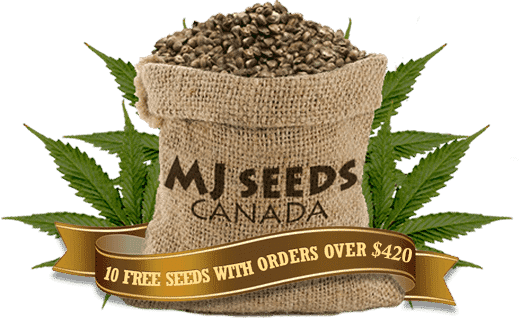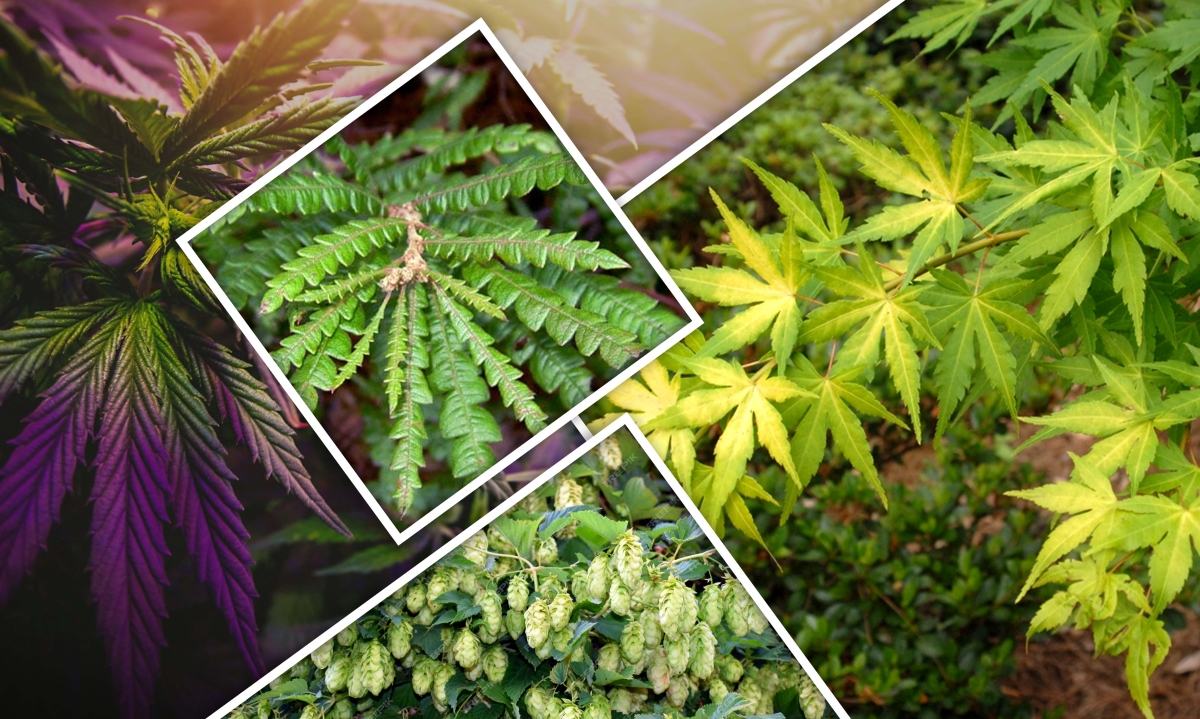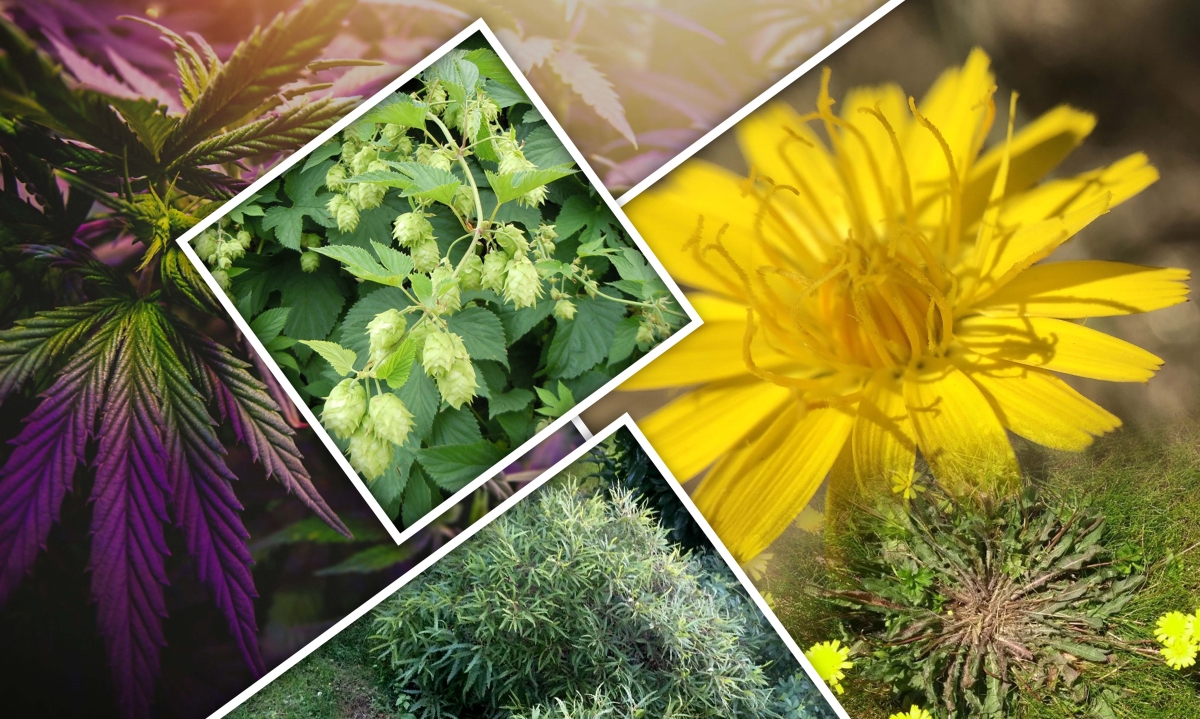There is an amazing variety of plants that look like weed in the field of botany that closely resemble cannabis or marijuana. Even while these plants may have some outward similarities, it’s crucial to remember that they differ greatly in terms of their chemical makeup, effects, and legal status. Recognizing these differences can help prevent misunderstandings and guarantee responsible use of cannabis and its derivatives.
Table of Contents
5 Plants That Look Like Marijuanas
1. Hemp (Cannabis Sativa)
2. False Dandelion (Hypochaeris radicata)
3. Japanese Maple (Acer palmatum)
4. Hops (Humulus lupulus)
5. Sweet fern (Comptonia peregrina)
What Does A Weed Plant Look Like
Identifying Regular Plants vs. Weed Plants A Practical Guide
Visual Characteristics
Observing Growth Pattern
Leaf Structure
Flower and Seed Characteristics
Disguising My Weed Plants
Conclusion
FAQs
5 Plants That Look Like Marijuanas
While cannabis is a widely recognized plant, there are several other species out there that bear a striking resemblance to it. From their leaves to their growth patterns, these plants can often be mistaken for cannabis at first glance. However, it’s important to note that these plants are entirely legal and don’t contain any psychoactive compounds. Let’s explore 5 plants that look like weeds but are completely different.
1. Hemp (Cannabis Sativa)
A strain of the Cannabis sativa plant known as hemp is grown for its industrial uses, including the production of fiber, seeds, and oils. Particularly in their early stages of growth, hemp plants might resemble cannabis plants in terms of their leaf forms and growth patterns. Hemp has relatively little quantities of tetrahydrocannabinol, or THC, the psychoactive component of cannabis; for this reason, hemp is rarely used recreationally.
2. False Dandelion (Hypochaeris radicata)
False dandelion is a flowering plant that is often mistaken for cannabis, particularly in its early growth stages. It has serrated leaves and a rosette growth pattern similar to cannabis, but it lacks the distinctive serrated leaflets of cannabis. False dandelion produces bright yellow flowers, unlike cannabis, which produces small, greenish flowers.
3. Japanese Maple (Acer palmatum)
Japanese maple is a popular ornamental tree or shrub known for its distinctive palm-shaped leaves and colorful foliage. In its early growth stages, the leaves of Japanese maple can sometimes resemble those of cannabis, leading to confusion. However, Japanese maple lacks the serrated leaflets and psychoactive compounds found in cannabis.
4. Hops (Humulus lupulus)
The Humulus lupulus plant produces flowering cones called hops, which are mostly used to enhance the flavor, aroma, and bitterness of beer. Hop plants’ leaves can resemble cannabis leaves in certain ways, particularly due to their general form and serrated edges. Hops serve quite different uses than cannabis and do not include any psychotropic substances.
5. Sweet fern (Comptonia peregrina)
Sweetfern is a deciduous shrub native to North America, known for its aromatic foliage and fern-like appearance. While not as commonly mistaken for cannabis as some other plants, sweet fern can share certain visual traits with marijuana, particularly in its leaf shape and serrated edges. However, sweet fern lacks the distinctive serrated leaflets and psychoactive compounds found in cannabis.
What Does A Weed Plant Look Like
The cannabis plant, also known as weed, exhibits distinct characteristics throughout its lifecycle. Initially, during the seedling stage, it appears as a delicate sprout with small, round leaves. As it matures into the vegetative stage, the plant develops a bushy structure with serrated leaves arranged in pairs along the stem. These leaves are typically vibrant green in color and possess a distinctive shape, resembling the outline of a hand with several fingers.
As the plant transitions into the flowering stage, its appearance undergoes significant changes. Female cannabis plants produce dense clusters of flowers known as buds, while male plants develop sac-like structures containing pollen. These buds are coated with resin glands called trichomes, which contain psychoactive compounds such as THC and CBD.
Overall, a mature weed plant is characterized by its height, leaf structure, and the presence of buds or pollen sacs. While variations exist between different strains and growing conditions, these fundamental traits remain consistent across most cannabis cultivars. Understanding the appearance of a weed plant is crucial for growers, enthusiasts, and individuals seeking to identify and appreciate this versatile botanical specimen.
Identifying Regular Plants vs. Weed Plants A Practical Guide
Distinguishing between regular plants and weed plants is crucial for maintaining a healthy garden or landscape. Several key characteristics can help you make this determination. By paying attention to these characteristics, you can effectively distinguish between regular plants and weed plants, ensuring the health and vitality of your garden or landscape.
Visual Characteristics
Regular plants have bright foliage, symmetrical growth patterns, and unique flower forms. They are frequently grown on purpose. They often follow the layout of the garden in terms of alignment and spacing. Weed plants, on the other hand, frequently grow quickly and invasively, with sprawling stems and leaves that might seem messy. Their foliage might not be as vibrant and luxuriant as that of cultivated plants. Furthermore, weed plants frequently multiply quickly, giving rise to a large number of seeds or runners that can spread throughout the garden.
Observing Growth Pattern
Regular plants typically exhibit predictable growth patterns, responding positively to proper care and maintenance practices. They may require specific environmental conditions, such as adequate sunlight, water, and nutrients, to thrive. weed plants are often opportunistic and adaptable, thriving in a wide range of environmental conditions. They may exhibit aggressive growth habits, rapidly colonizing bare soil and outcompeting desirable plants for resources. Additionally, some weed plants exhibit allelopathic properties, releasing chemicals that inhibit the growth of neighboring plants.
Leaf Structure
Analyzing the structure of the leaves can also help distinguish between regular and weedy plants. Regular plants usually have well-defined leaf structures, often symmetrical and consistent in shape. The plant’s overall aesthetic appeal is enhanced by these leaves. Regular plants usually have well-defined leaf structures, often symmetrical and consistent in shape.
Weed plants, on the other hand, may have irregular or jagged leaves, varying in size and shape. There are weed plants that have opposing or twisted leaf arrangements and some that have leaves arranged alternately along the stem. It can be easier to tell desirable plants from invasive weeds by being aware of these slight differences.
Flower and Seed Characteristics
When distinguishing between common and weed plants, flowers and seeds are essential diagnostic characteristics. Regular plants usually yield visually striking flowers, frequently with eye-catching hues, complex petal arrangements, and pleasant scents. The flowers are essential for attracting pollinators and improving the garden’s aesthetic appeal.
Weed plants might yield little, unpleasant flowers that don’t have the same visual appeal as flowers that are grown. Furthermore, weed plants frequently yield a large number of seeds that are readily distributed by the wind, animals, or people. It can be easier to identify possible weed species and put in place effective management measures if you pay attention to the size, shape, and techniques of seed distribution.
Disguising My Weed Plants
Growing cannabis in ordinary plants has been a common approach for growers who want to remain discreet in modern gardening. Cannabis lovers can successfully conceal their cannabis harvests by carefully choosing strains that have growth patterns, foliage, and flowering seasons similar to those of common garden plants. Herbs like mint or basil added to marijuana can help to further improve the disguise by covering up the unique smell of cannabis.
To guarantee the best possible growth for all of the plants involved, it is essential to take into account elements like soil composition and the amount of sunshine required. Additionally, maintaining strict pruning and training techniques can help maintain the illusion of a typical garden. Growers should be aware of local rules and regulations about cannabis growing to avoid legal consequences, even though hiding marijuana plants among native vegetation has benefits in terms of privacy and security.
Conclusion
The cannabis plant exhibits a unique and unmistakable appearance characterized by its tall stature, palmately compound leaves, and dense clusters of resinous buds. Recognizing these features is essential for growers, consumers, and regulatory authorities alike. People may more fully enjoy the aesthetics of weed plants, make use of their medicinal properties, and successfully negotiate the complicated world of cannabis cultivation and use if they know what a weed plant looks like.
Additionally, distinguishing between regular plants and weed plants is essential for maintaining a healthy and aesthetically pleasing garden or landscape. By closely observing visual characteristics, leaf structures, flower and seed characteristics, and growth habits, gardeners can effectively identify and manage weed infestations, preserving the vitality and beauty of their outdoor spaces. With this practical guide, you are equipped to confidently differentiate between desired plants and invasive weeds, ensuring the success of your gardening endeavors.
FAQs
1. Is there a plant that looks like cannabis?
Yes, several plants resemble cannabis to the untrained eye, including hemp, Japanese maple leaves, and certain species of mint and basil. These plants share similarities in leaf shape, color, and overall structure, leading to occasional confusion, especially among those unfamiliar with cannabis. However, upon closer inspection, distinguishing features such as the arrangement of leaves, presence of buds, and characteristic odor help differentiate true cannabis plants from their look-alikes.
2. What hibiscus looks like weed?
Hibiscus plants may share some superficial similarities with cannabis, particularly in the shape and arrangement of their leaves. Both hibiscus and cannabis can have serrated, palmately lobed leaves, which may lead to occasional confusion. However, there are notable differences: hibiscus leaves tend to be broader and less elongated compared to cannabis, and hibiscus lacks the distinctive buds and resinous trichomes characteristic of cannabis plants. Despite these resemblances, careful observation reveals distinct features that differentiate hibiscus from cannabis.
3. What do trichomes look like weed?
These trichomes, which are easily seen without magnification, resemble long, mushroom-like stems crowned with spherical caps. They are especially abundant in the flowering stage, covering buds, bud sites, and sugar leaves.
4. What is the craziest-looking weed plant?
Frisian Duck is a unique cannabis strain that is renowned for its unconventional appearance. Its foliage resembles that of a duck’s foot, with leaves exhibiting a distinctive webbed shape. This trait earned the strain its name, as the leaves closely resemble the silhouette of a duck’s foot.
5. What does a wild hibiscus look like?
The Wild Hibiscus belongs to a group of yellow-flowered hibiscus varieties characterized by five prominent petals and a branched style. These plants typically manifest as slender shrubs or small trees, featuring coarse leaves and branches. The leaves are typically lobed with serrated edges and are adorned with coarse, star-shaped hairs.






